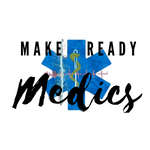Today, we’re diving into a topic that’s crucial but often overlooked: Team Communication in Emergency Medical Services. Whether you’re a seasoned paramedic or a fresh EMT, you know that effective communication is the backbone of any successful emergency response. So, let’s explore why it’s so important and how you can improve it within your team.
The Importance of Team Communication
In the high-stakes, fast-paced world of EMS, clear and effective communication can literally be a matter of life and death. Miscommunications can lead to delays, errors in treatment, and even legal complications. On the flip side, good communication can streamline operations, improve patient outcomes, and reduce stress for everyone involved.
Key Elements of Effective Communication
Clarity
In emergency situations, there’s no room for ambiguity. Whether you’re relaying patient information or coordinating tasks, your message needs to be clear and straightforward.
If you’re on a crew with multiple abilities (EMR, EMT, Medics and Firefighters) kill two birds with one stone. Example: You find a difficulty breathing patient anxiously waiting at the curb for the ambulance. You place the patient on o2 and they sit on the cot. You can inform the patient and the crew at the same time. When we get in the ambulance we will be doing a lot of things. This is Matt. He is going to place you on a heart monitor. I will be starting an IV while John gives you a breathing treatment.
Timeliness
In EMS, time is often the most scarce resource. Quick, timely communication helps ensure that everyone is on the same page and can act without unnecessary delays.
Accuracy
Incorrect information can lead to incorrect treatment. Always double-check your facts before relaying them, and don’t hesitate to ask for clarification if you receive information that seems incorrect or incomplete.
Adaptability
Every emergency is different, and the ability to adapt your communication style to different situations and team members is invaluable.
I changes to a different service after 14 years. A change was the new service required a verbal scene size up on all motor vehicle accidents. A report of how many vehicles, the type of impact and an estimate of possible patients it a game changer over the air. Often proactive crews will start heading that way in case you need more help.
The initial size up explaining MOI can change mindset of those coming to help you. They may even start thinking of your needs before you have a chance to. Example you voice extraction needed and they ask if you need a helicopter.
Strategies for Improving Team Communication
Regular Training
Include communication exercises in your regular training sessions. Simulate real-life scenarios that require team members to communicate effectively under pressure.
Debriefing
After each call, take a few minutes to debrief. Discuss what went well and identify any communication issues that need to be addressed.
Closed-Loop Communication
This involves repeating back critical information to confirm understanding. For example, if one team member says, “Administer 5 mg of Drug X,” the other would confirm by saying, “Administering 5 mg of Drug X.”
Checklists and Protocols
Having standardized checklists and protocols can serve as a safety net, ensuring that crucial steps aren’t missed in the heat of the moment.
Wrapping Up
Effective team communication is not just about talking; it’s about ensuring that the right information gets to the right people at the right time. By focusing on clarity, timeliness, accuracy, and adaptability, you can significantly improve the quality of your team’s communication—and by extension, the quality of care you provide.
So, go ahead and start implementing these tips in your EMS team. After all, good communication saves lives!
